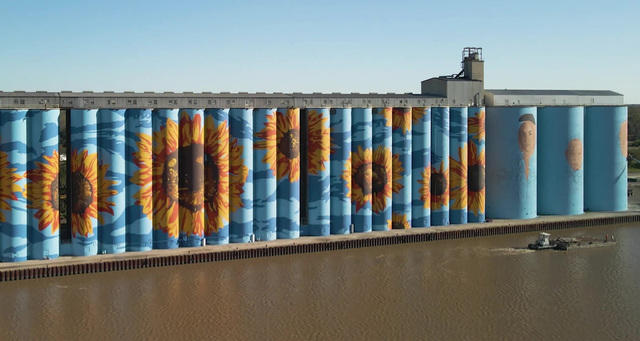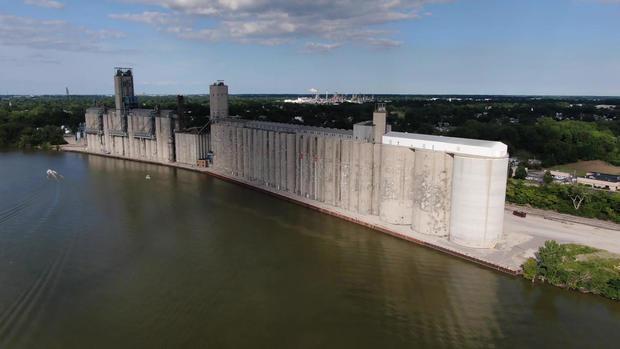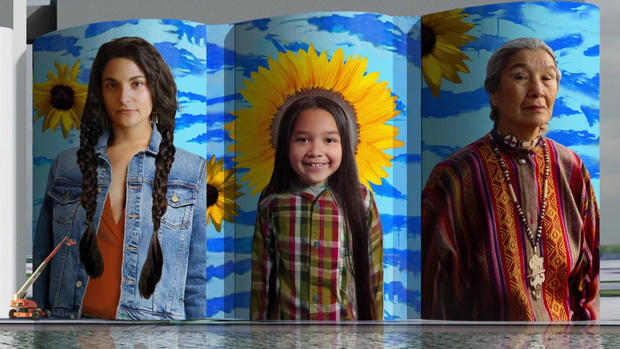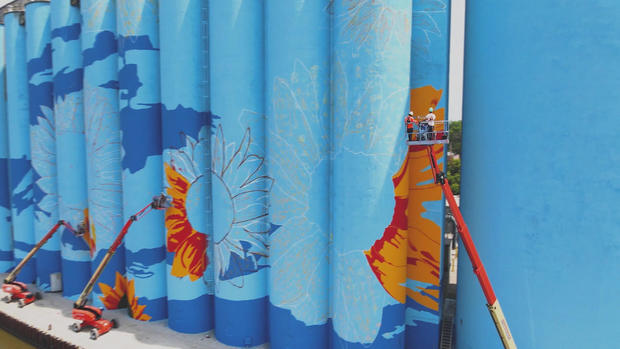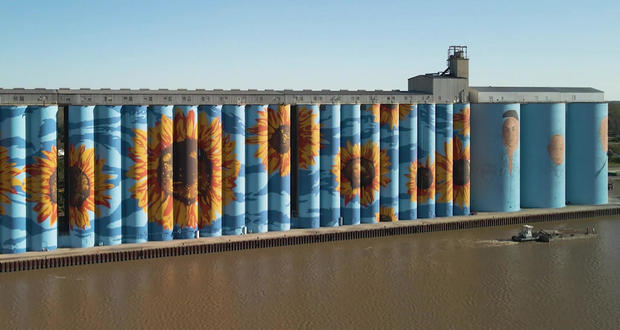Toledo, Ohio is known for a few things, like glass products, the Mudhens, and maybe that song by John Denver:
Saturday night in Toledo, Ohio
is like being nowhere at all.
But now, the people here are working on something that could change the way the world sees their city. They’re turning 28 grain silos into a giant mural, and when all the painting’s done, it’ll be the largest artwork of its kind in the country. It’s called the Glass City River Wall.
The whole thing started with a boat ride. A couple of friends were out on the Maumee River on a picture-perfect evening. The one thing that kind of ruined that perfect picture was a bunch of big gray silos on the shore.
“We literally, the women who started this, looked and said, ‘We should paint that. That’s a great canvas,'” said Christina Kasper,” the project’s manager. “And we said, ‘Yeah, we should paint that. That would be great!'”
But that “great idea” would take an ocean of paint. They’d have to cover around 170,000 square feet of gray concrete, and paint is expensive. The silos’ owners, the Archer Daniels Midland Company, put up some money, but the organizers still needed to raise around $750,000. So, Toledo pitched in, from small-time donors to just about every big business in town.
“We were completely naïve,” Kasper told correspondent Tracy Smith. “There wound up being nothing to it but to do it. Ultimately, you can make it work. You figure it out.”
And then, they also needed to figure out what to paint in their mural. So, so they put out a call for designers, and Los Angeles artist Gabriel Gault stepped up. Gault is mainly a portrait guy, and when he looked at the three biggest silos he saw this: Three Native American faces, each over a hundred feet tall, a tribute to the original farmers of the land.
And for the rest of it, Gault chose something that grows practically everywhere in the Midwest: sunflowers, a symbol of hope that he hoped would brighten the Toledo skyline for years to come.
Smith asked Gault, “Tell me, what went through your head when you got the call saying it’s you?”
“I was like, I can’t do this alone!” he replied. “I’m gonna have to humble myself a little bit and, you know, get some other artists on this project to help me create this thing and finish this thing.”
The work began in June, as local artists sprayed the gray cement with paint as blue as a perfect summer sky.
All through the summer, and in all kinds of weather, a team of modern-day Michaelangelos turned the gray concrete into a soaring monument to the city, and to themselves.
“Have you ever done anything close to this scale before?” asked Smith.
“Never, never,” said painter Dean Davis. “Couldn’t even imagine it.”
“We’re not in the sexiest town in the world; we recognize that,” said organizer Brandy Alexander Wimberly. “We’re not even sexy by Ohio standards! But now, I mean, we’ve got something really cool to talk about, something fresh, something new, something innovative, something that can be celebrated that we don’t have a lot of attention for.”
Five months of work, three thousand gallons of paint, one big idea.
Kasper said, “You know you’re onto something when you say it out loud, everybody says, ‘Why didn’t we always do that?'”
The mural is not quite finished, but it’s already become a symbol, not only of Toledo, but of the art of the possible.
Smith asked, “What do you hope ultimately that people take from this?”
“I think people can recognize that they can do anything,” Kasper replied. “The sky really is the limit.”
For more info:
- Glass City River Wall
- gabegault.com
- ADM
- Communica
- Myaamia Center, Miami University
- Nick Corbin Productions (Instagram)
Story produced by John D’Amelio. Editor: Carol Ross.















